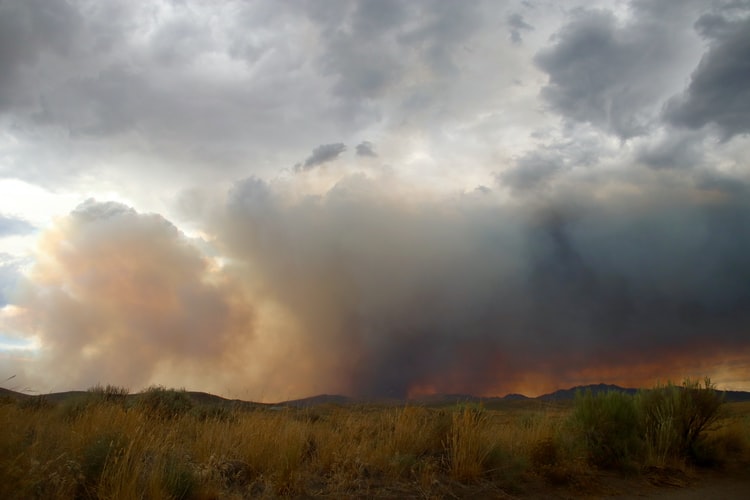Natural Disasters and Their Economic Cost on the U.S. Economy in 2020
A year of record-breaking disasters
Wildfires in California, Oregon, and Washington in August through to December in 2020 alone cost $16.5 billion.
Natural disasters in 2020 totaled $95.0 billion in damages in the United States, which is more than double the 41-year average of $45.7 billion. Along with this, the annual average temperatures in the lower states of the U.S. ran 2.4 degrees higher than the 20th century average. These two statistics are correlated, as with climate change-induced rising temperatures comes more intense fires, hurricanes, and other natural disasters.
In the year 2020 alone, there were 22 billion-dollar disasters. 7 of these disasters were linked to tropical cyclones, 13 were linked to severe storms, and the other 2 were connected to droughts and wildfires. This broke the previous record held by both 2017 and 2011 of 16 billion-dollar disasters.
2020 was also the year with the most wildfires and hurricanes in the Atlantic. This is thought to be connected to the Earth’s changing climate, as 2020 is tied with 2016 for being the hottest year on record. Climate change not only affects the average temperature of the Earth, but also shifts temperature extremes. Changes in temperature extremes increase the chances of natural disasters to occur and the intensity of storms, alongside stimulating the melting of polar ice caps and rising ocean temperatures.
While it remains uncertain if climate change is actually responsible for the recent increase in the cost of natural disasters, global warming will most likely impact future catastrophes and disasters. The increase of greenhouse gases, global warming, and climate change could minimize the temperature difference between the North and South Poles and the equator. In places near the Equator where this is already occurring, the changes in temperature will most likely not have a significant impact, but in mid-latitude and higher latitude areas, the temperature change could cause storms due to an increase in water vapor. With this shrinking difference in temperature between the equator and the poles, there should be fewer number of storms, but with more water vapor in the air due to evaporation, future storms will most likely be greater in intensity.
The increase in high-cost disasters is also in part related to population growth, which puts more people and buildings at risk of being damaged by natural disasters. That being said, it still does not fully size up to the magnitude of the disasters, with Hurricane Laura in August of 2020 costing $19.0 billion and 42 lives, and the wildfires in California, Oregon, and Washington in August through December 2020 costing $16.5 billion and 46 lives.
Hurricane Laura was the strongest hitting hurricane to hit Louisiana since the Land Island hurricane in 1856 and had the highest landfall wind speed since Hurricane Michael in 2018. 2020’s wildfire season was also extremely devastating, burning more than 10.2 million acres with California beating its last annual record of area burned in 2018 with 4.1 million acres burned.
2020 was a year full of record-breaking disasters, with many of them costing billions of dollars, but this is not the only area in which climate change has wreaked havoc. “Climate change is an urgent issue that requires immediate attention. There are multiple layers to the damage it causes,” said Emma Afful ’22. Climate change is not only having a large impact upon the economy, but it is most likely going to cost even more in the future as our populations grow.
“Climate change is an urgent issue that requires immediate attention. There are multiple layers to the damage it causes,” said Emma Afful ’22.
Donna Li is a Graphic Designer and Student Life Section Editor for 'The Observatory' yearbook. They find the research involved in journalistic writing...











